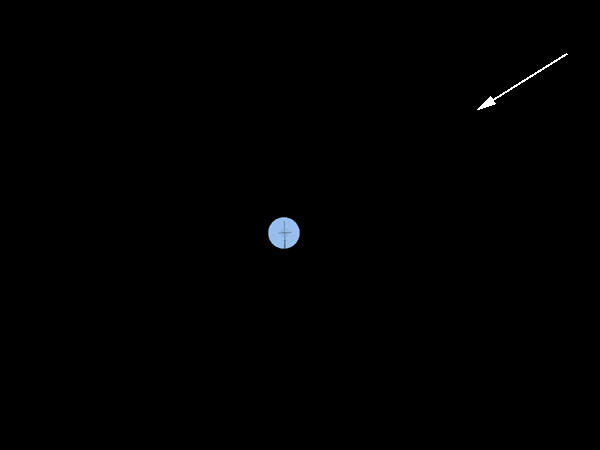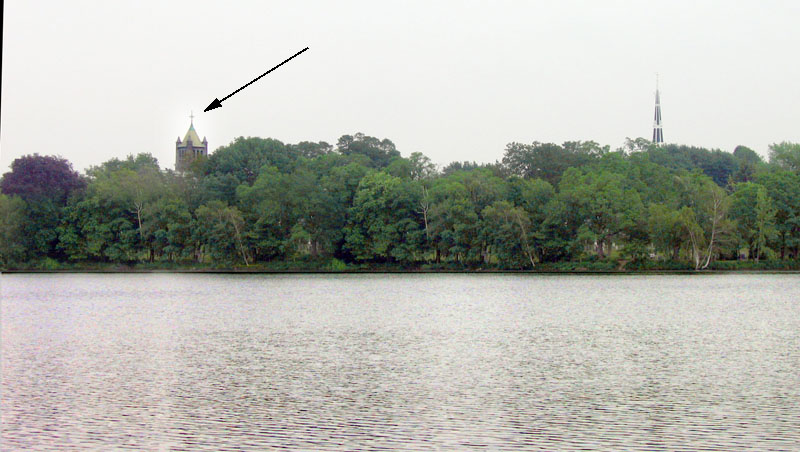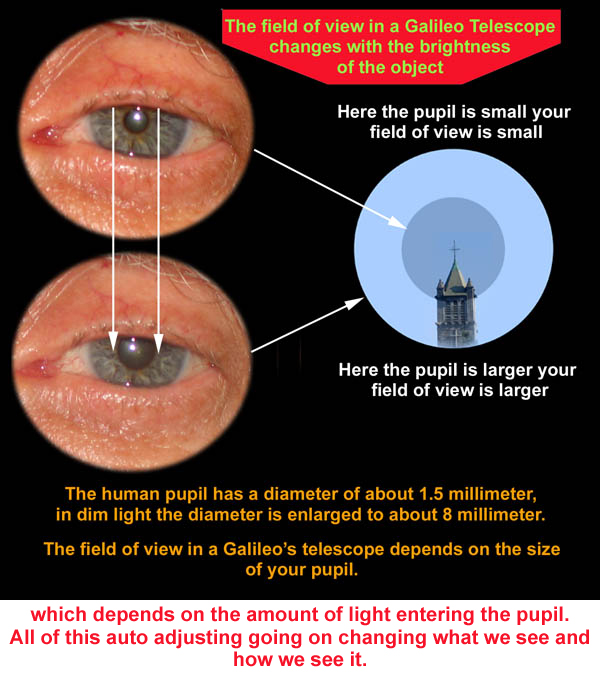|
|
|
<
Why does the image grow and improve as the observer concentrates on it?
Much of the literature reports that the optics of a Galilean telescope has a calculated angular field of view of 15 minutes of arc. That is if the object is a 1000 away from the telescope one would only see what is included in a 4 foot diameter circle of the object. However few authors have noted that the Galilean telescope's field of view is largely determined by the pupil of the observer's eye instead of baffles in the optics and that the size of the pupil changes with the amount of light interning the eye. For example normally the pupil of the eye has adjusted to the ambient light of the surroundings before looking into the telescope. Thus if the sun is out the pupil of the viewers eye is quite small. Thus what one first sees looking into the telescope is a field of view that is just a small point of light surrounded by a sea of darkness. The darkness is a combination of the optics and partly because the rods and cones in the eye have not become dark adapted. The field of view changes with time. As the observer looks into the telescope in this low light level the pupil and the rods and cones adjusts themselves to the lower light level and becomes larger increasing the field off view therefore one begins to recognize more details in the object. See the picture below showing the changes of the pupil diameter for two light levels. The upper picture shows a pupil in brighter light conditions than the eye below.
|
|
Copy right Jim & Rhoda Morris 6/02/2006 |


